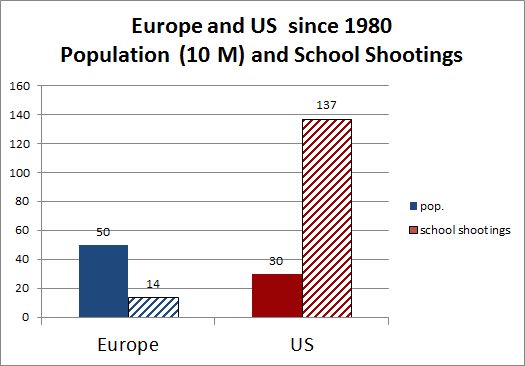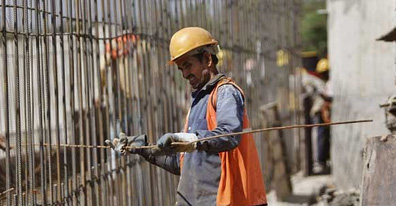Manson Jail Cell Preserved in LA Hall of Justice
October 27, 2014
School Shootings: What’s Different About Europe?
October 28, 2014 
New Delhi: India’s GDP is likely to expand by 5.6 per cent this fiscal as reforms gain momentum and the growth is expected to accelerate as proposed measures such as GST will give a boost to manufacturing sector, a World Bank report said on Monday.
In the following years, the Gross Domestic Product (GDP) growth is likely to rise further to 6.4 per cent and 7 per cent in FY16 and FY17 respectively, it said.
“India’s economic growth is expected to rise to 5.6 per cent in FY15, followed by further acceleration to 6.4 per cent and 7 per cent in FY 2016 and FY 2017,” said the World Bank report titled ‘India Development Update’ released here.
India’s growth is likely to accelerate towards its high long-run potential and implementation of GST as well as dismantling of inter-state check posts can significantly improve the global competitiveness of Indian manufacturing firms.
“Implementing the GST will transform India into a common market, eliminate inefficient tax cascading, and go a long way in boosting the manufacturing sector.
“The transformational impact of reform, particularly if enhanced by a systematic dismantling of inter-state check posts, can dramatically boost competitiveness and help offset both domestic and external risks to the outlook,” said Denis Medvedev, Senior Country Economist, World Bank, India.
The incumbent government is positive on reforms and this is good, said Onno Ruhl, World Bank Country Director in India.
“With economic reforms gaining momentum, long-term prospects for growth remain bright for India. To realise its full potential, India needs to continue making progress on its domestic reforms agenda and encourage investments.
“The government’s efforts at improving the performance of the manufacturing sector will lead to more jobs for young Indian women and men,” said Ruhl.
Growth has rebounded significantly due to a strong industrial recovery. Capital flows are back, signalling growing investor confidence as inflation has moderated from double digits, exchange rate has stabilised and financial sector stress has plateaued, said the update.
Long term growth potential in India remains high on favourable demographics, high savings and recent policy and efforts to improve skills and education, it added.
“Improved growth prospects in the US will support India s merchandise and services exports, while stronger remittance inflows and declining oil prices are expected to support domestic demand,” the report said.
The projections may face risks from external shocks, such as financial market disruptions on the back of monetary policy changes in high income countries, slower global growth, higher oil prices, and adverse investor sentiment on geo-political tensions in the Middle East and Eastern Europe.
In the domestic front energy supply, fiscal pressures from weak revenue collection in short term can pose challenges.
“However, risks could be mitigated to a large extent by focusing on reforms that help the manufacturing sector,” it said.
It will free up decisions on warehousing and distribution from tax considerations so that operational and logistics efficiency determines the location and movement of goods, it added.
GST offers opportunity to rationalise and re-engineer logistics networks in India, given the inherent inefficiencies with taxes based on the crossing of administrative boundaries.
PTIFirst Published: Monday, October 27, 2014, 18:42


